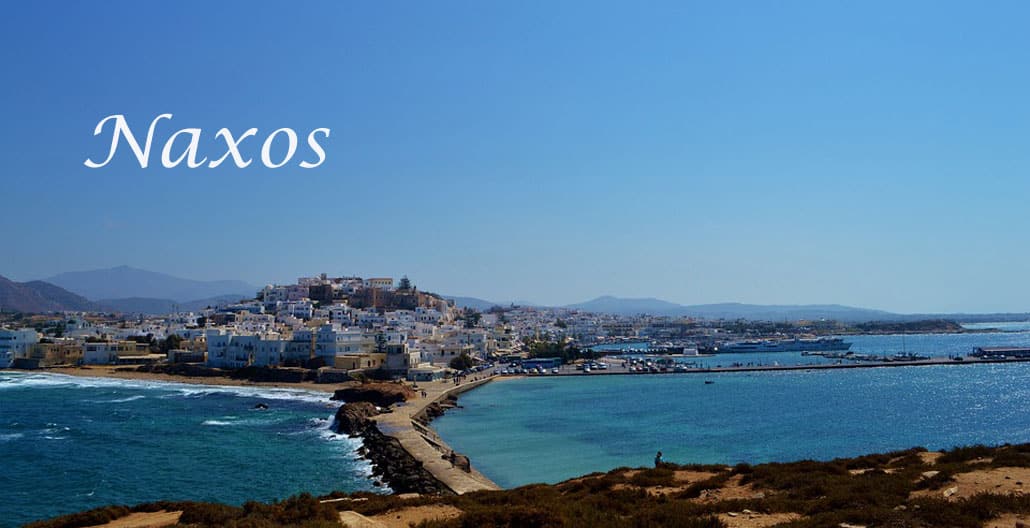The culinary uniqueness of Naxos
Naxos is the largest and most fertile island of the Cyclades. Densely populated island with a special cultural character, excellent products and great cuisine. Its people keep their kitchen alive, cooking with the goods that their place produces.
Naxos is a fertile garden in the sea., land that produces from the sea to the mountains. Since ancient times, Naxos has been famous for the euphoria of the soil and its wine, which Archilochos compares to the nectar of the Olympian gods.
The water-bearing valley of Apollo and the southern, fertile, diligently cultivated plains of land are overgrown with fruit trees, vegetables, vineyards and olive groves, yielding fresh olives, clotted olives, fine olive oil. Citrons with citrus for a sweet-drinking citrus fruit, but also Papylonia (a type of frapa), almonds, figs and the herb cypiro which used to flavor breads.
In Zas the highest mountain of the Cyclades , in Fanari and the whole area of Kinidaros lower than the quarries and limestone slabs, the lambs of the mountains graze, they feed well on grasses that grow in the whitewashed soil and give the rich milk that becomes cheese – not one, but six-seven different ones. Further down, Axiotes, have the stables and cheese factories, scattered around villages, such as Filoti.
In Filoti there are around 150 family cheese factories, which produce fresh or ripened cheeses, mizithras and arsenics, from fresh sheep’s milk. Their natural softness, the lively smell of milk, their vitality is amazing.
Cheeses of Naxos
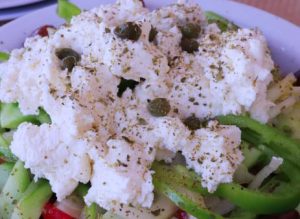
Naxos is also famous for its wonderful cheeses. Locals call them “Male” and “Female”. Many choices from a type of soft mizithra, to yellow spicy cheeses with a robust flavor with a mixture of sheep’s and goat’s milk. Naxos graviera occupies a special position in the market. Product P.O.P. since 1996, with many awards and distinctions.
The milk used is from cows by 90-95% and 5-10% goats and sheep. Other cheeses are made only from goat’s milk. All cheeses are made from local milk from the island’s farms. The producer of graviera is the Union of Agricultural Cooperatives of Naxos, but other independent producers also produce graviera.
Arseniko (nale) is their best cheese. The milk, after it has been heated and the rennet introduced, is slightly agitated by the stirrer, a branch of a fir tree to break it. They patiently stir it with a hard stick and then, after it has started to form a mass, they pour it into the cheese stool, the bench where the cheese is kneaded. Until this time the cheese is called raw. Rubbery and white, it is kneaded with the hands for a while, to leave the curd inside.
They don’t throw this away, they collect it to be used in the preparation of mizithra. The fermented kefalotiri is distributed in baskets, which used to be made of reeds and were called tsimiskia. It is salted, washed with vinegar and brushed, rinsed with water and then placed on an oiled board in a cool and dark place. It is smeared with olive oil or murga, the dregs of the oil – this is what gives it the dark color on the outside. It needs at least three months to mature, the longer it matures the more flavor it has. If you want to age it for years, you have to store it in olive oil.
From the whey that remains during cheesemaking together with the rest that is enchanted by the draining of the head cheese, mizithra, which is also called female cheese, is made. Fresh milk is added to this mixture (it is called boiling). As soon as it boils and foams, they collect the pieces with a slotted spoon and put them in baskets to drain a little. It can be eaten at that time, hot. It is a soft cheese, whitish, smooth. If they let it drain, harden and mature, the anthotyros is obtained, which is rubbed on the spaghetti. It’s fresh and ultimately sweet.
Naxos gruyere
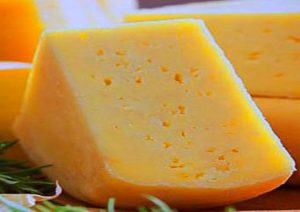
Naxos gruyere is a hard cheese, pale yellow, with a solid elastic mass, and several scattered holes. It is formed into cylindrical heads, usually ten kilograms, with a thin skin, which is covered by microbial growth that contributes to ripening.
It is a sweet cheese, with a full, rich taste, with a stronger aroma of butter and milk and lighter of walnut and almond. It has been designated a PDO product and is produced from cow milk or a mixture of cow milk with sheep and goat milk, in a ratio of 80% to 20%.
Xinomyzithra
The other unlikely cheese is xinomyzithra. It is curdled every day, in almost all households, because there is no need to curd. It is made from 80% goat’s and 20% sheep’s milk, it coagulates (with rennet) in a clay pot. It takes one day to harden slightly and the next day it becomes a stick. They take the stick with the spoon, put it in a basket to take shape and then take it out of the basket and leave it in a stream of air (e.g. in a window) to harden. This is the xinomyzithra that in 30 days becomes xinotyri or xinotyri or whatever is simpler and tastier than any other in the Cyclades.
Naxos lemon liqueur
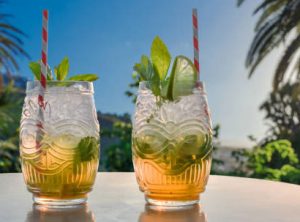
Naxos lemon liqueur along with chartreuse and triple check were exported to European countries, Egypt and America. The fruits were exported abroad in large quantities. In recent years, cultivation has declined dramatically. Citrus production begins with the harvesting of the leaves from October to February.
The leaves are cleaned and placed with stem, fruit peel water and alcohol in traditional copper vats. After 12 hours the distillation takes place. Depending on the quantity and aroma, a second and third distillation takes place. So the taste becomes more intense. The distillate is diluted with water. The clear floral citrus liqueur is produced in three different types with different colors (green, yellow and white) with different percentage of alcohol and sugar. Annual production no longer exceeds 20,000-25,000 bottles.
Naxos potatos
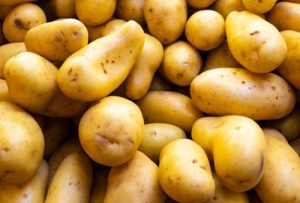
Every summer, in August, the potato festival is organized in Naxos. Over 3,500-4,000 people of all ages, locals and visitors, taste the delicious Naxos potato cooked in various versions-recipes with passion and imagination. They drink local wine, feast and dance to the sounds of traditional island music in a celebration dedicated to this local product. The Festival is organized by the Union of Agricultural Cooperatives of Naxos (EAS). After all, the Naxos potato has been registered as a Product of Protected Geographical Indication (PGI).
Traditional recipes
Traveling through the villages of Naxos from Koronos and Damarionas to Agiassos, you meet locals with memories of a cuisine that has not changed significantly.
In Apeiranthos and the surrounding villages, the main ingredient is meat. The boiled “zola” with goat meat and the “patudo” stuffed lamb with vegetables (spinach, chard, chard), rice, livers and raisins. In Melanies, the “melanite rooster” dominates with thick spaghetti and plenty of cinnamon. One of the most common summer foods is yachnada with various “turlou” vegetables: eggplants, zucchini, potatoes and tomatoes. Delicious pies and traditional sweets complete the table.
Families used to have, as in almost every place, domestic pigs, one was slaughtered at Christmas and the other at Halloween.
The meat is made into fragrant aemasies, steamed cephalopods, gleaners for omelettes and mashed potatoes, coarsely salted pastes in clay, roast garlic in the pot with local wine and salted ham made in a wooden crate.
On Halloween Sunday, the roast is still made, which is eaten with spaghetti. The fat with the skin from the piece above the brisket is the salted or herno, (cured). At that time, the matzes, the cellars, were filled with clay where they kept it. The salted sauce was made with beans or a piece was added to the dolmades or summer butters, for deliciousness.
From the cheeks or the neck they made the sweet, rosemary meze that stayed and matured in the fat – that was butter to their bread. Another preparation is ham, deboned pork flavored with garlic and cinnamon cloves and baked in salt. It was usually made at Halloween and eaten until Christmas. Festive food is also amathies, pork belly stuffed with rice, special, but very tasty.
